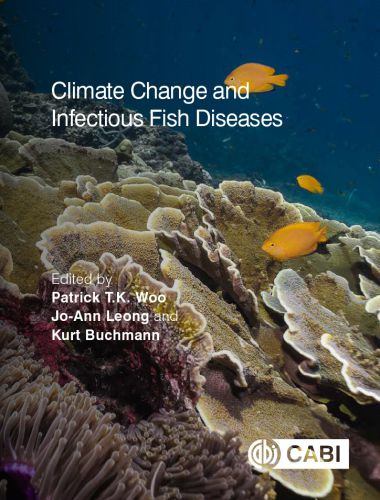Climate Change and Infectious Fish Diseases
by

Climate change with global warming is not disputed by the vast majority of scientists and the aquatic system is most affected. A global rise in water temperature and acidification of the aquatic environment will continue even if we can significantly reduce the current output of the two most important greenhouse gasses (carbon dioxide and methane). These and other environmental changes will affect fish health which includes infectious pathogens.
This important new text is the second volume on climate change and fish health. It covers changes to the freshwater ecosystem and their current and expected effects on selected infectious diseases of fish. The book represents contributions by over 50 experts from 18 countries. Comprehensive and thought-provoking, the book details abiotic and biotic environmental changes in temperate and tropical freshwater ecosystems, sequestrations of atmospheric carbon dioxide and effects on infectious diseases (12 microbial and 10 parasitic) in economically important fish in tropical, subtropical and temperate waters. Fish Diseases and Disorders; Volume 3: Viral, Bacterial and Fungal Infections
The text is key reading for fish disease scientists, aquatic ecologists, fish health consultants, veterinarians, policy makers and all who are interested in fish health and the environment.
Climate change with global warming is not disputed by reputable scientists and the aquatic environment (e.g. rivers, lakes, oceans) is greatly affected. The two important greenhouse gases that contribute to climate change are carbon dioxide (CO2; e.g. from extensive use of fossil fuels by industries and in transportation) and methane (CH4; e.g. from the gas and oil industry, and agricultural activities such as large-scale breeding and raising of livestock for food) released into the atmosphere. These gases trap heat radiating from the earth and increase environmental temperatures.
Of the two gases, atmospheric CO2 is much more abundant and is the major factor contributing to climate change. Briefly, it also dissolves in water, acidifies aquatic ecosystems and decreases the amount of dissolved oxygen at higher temperatures, which may lead to hypoxic conditions for many aquatic organisms including fish. Climate change is also associated with more extreme and unusual weather conditions; e.g. it changes wind patterns, causes heavier rainfalls with high winds in some regions and prolongs droughts with widespread forest fires in other areas. Global warming also increases thawing of the permafrost, melting of glaciers and causes more rapid melting of the North and South Poles, which elevates sea levels and modifies salinities and water currents. These changes alter aquatic food webs and perhaps the compositions of aquatic animal communities. Many of these environmental changes may directly and/or indirectly affect the life history, biology and survival of aquatic organisms.
Direct Link For Paid Membership: –
